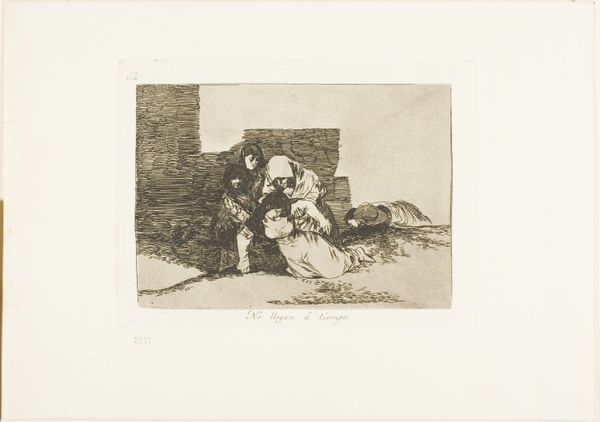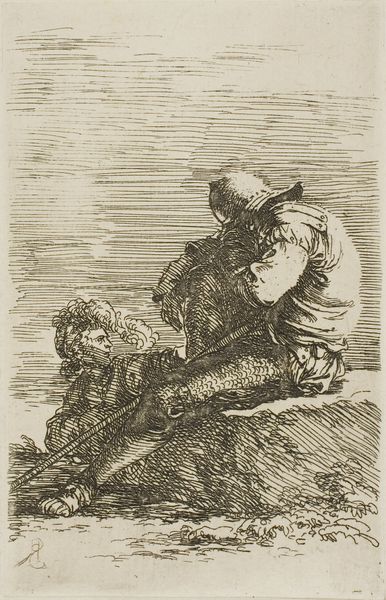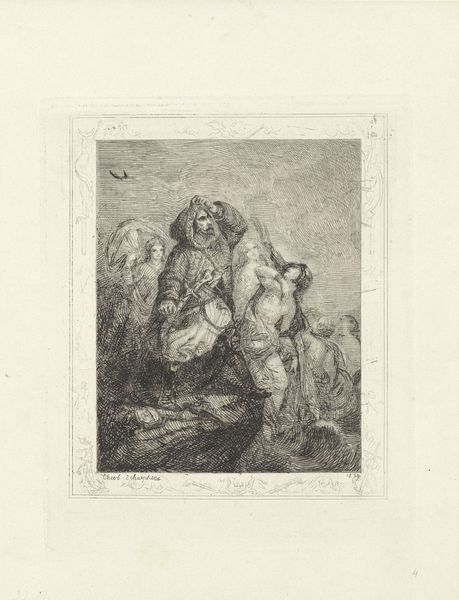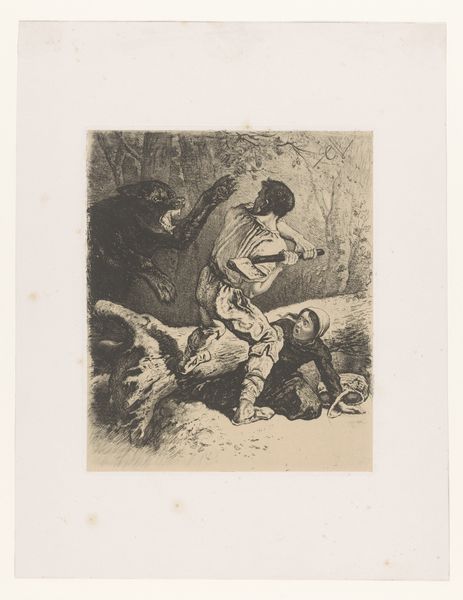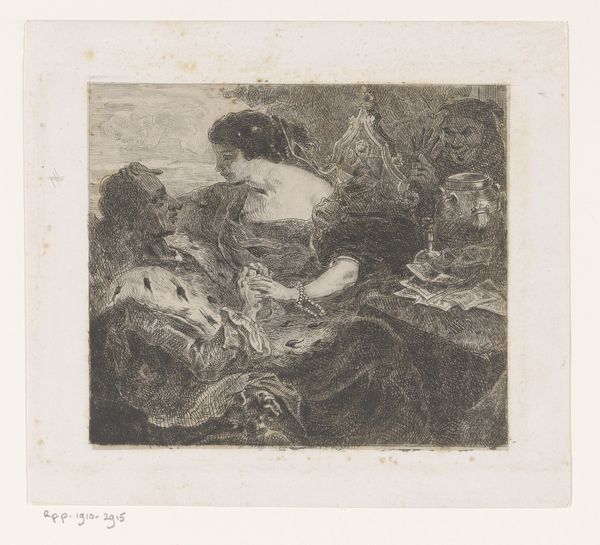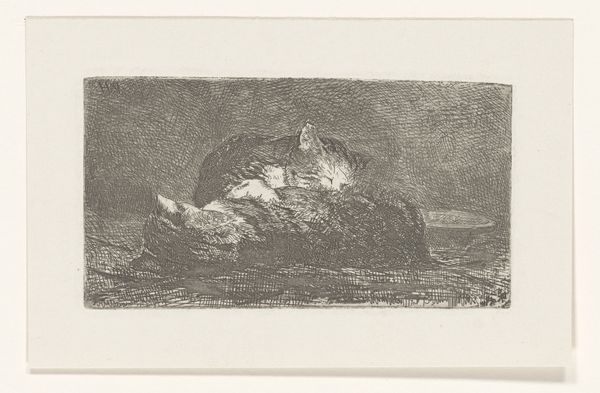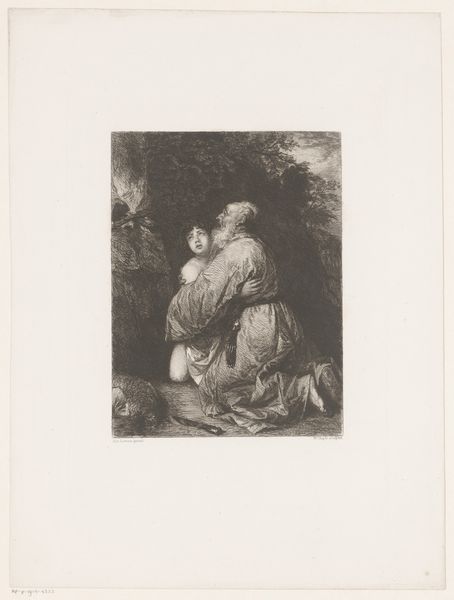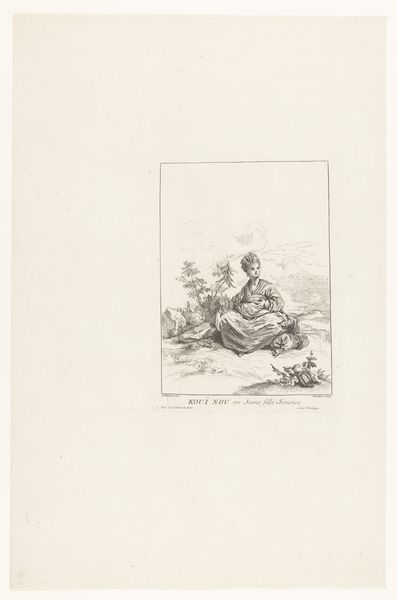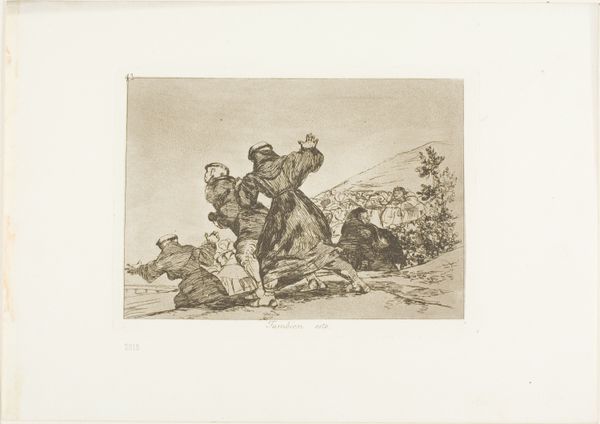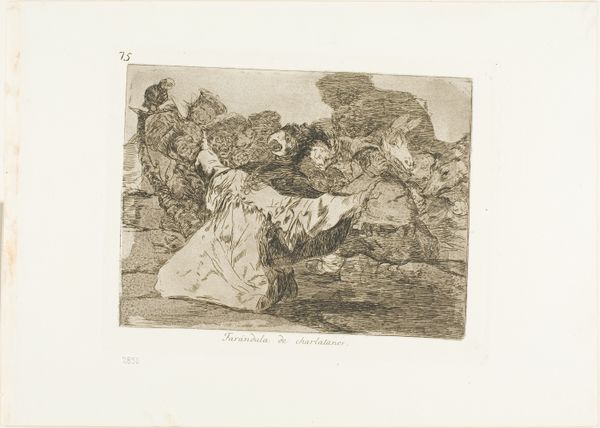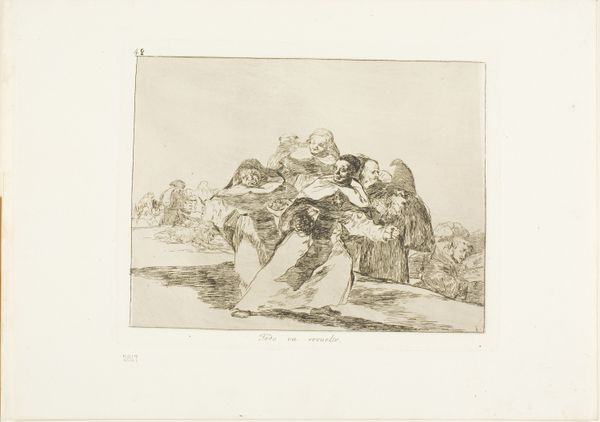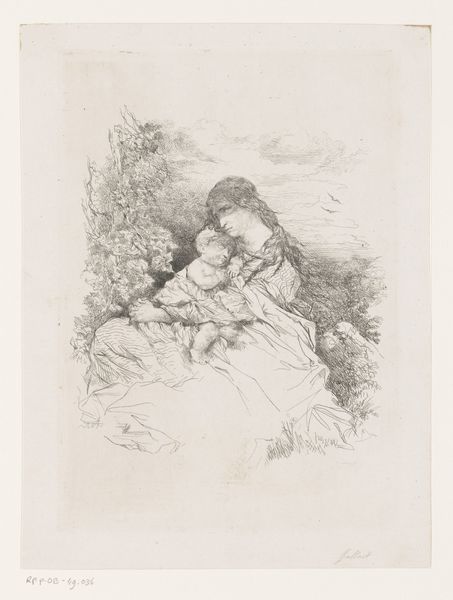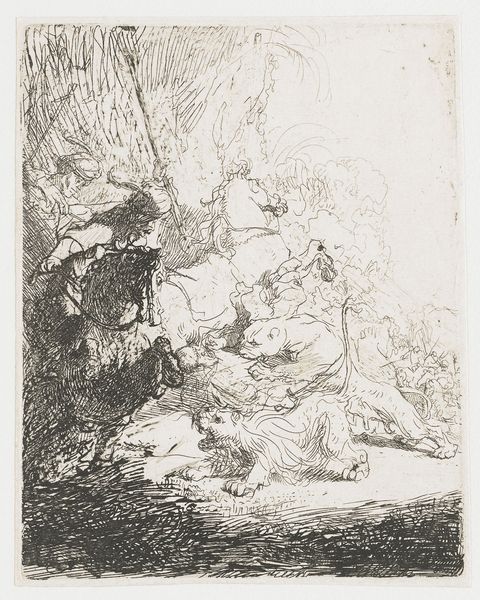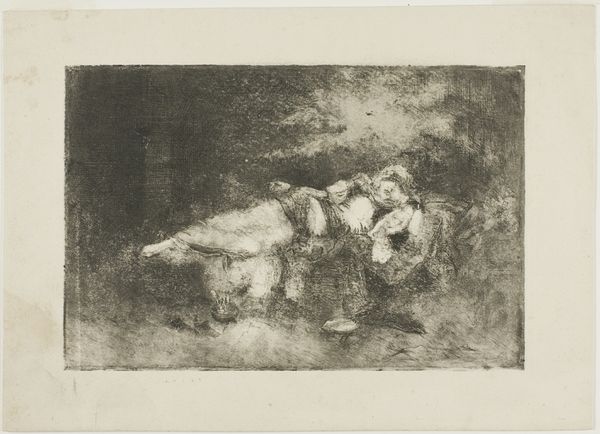
print, etching
#
baroque
# print
#
etching
#
landscape
#
figuration
#
genre-painting
Dimensions: height 143 mm, width 92 mm
Copyright: Rijks Museum: Open Domain
Editor: We're looking at Salvator Rosa’s etching, "Twee soldaten," or "Two Soldiers," made around 1656-1657. It’s currently housed in the Rijksmuseum. It feels a bit somber, a small work but full of detail. What do you see in this piece, looking at it through the lens of materials and making? Curator: Consider the process of etching itself, a fairly democratized medium even in the 17th century, allowing for wider distribution than unique paintings. Look at the *labor* involved in its production. Rosa wasn't just ideating; he was physically engaged with the copper plate, the acid, the press. How does this engagement with material shape our understanding of the figures depicted, these resting soldiers? Editor: That’s interesting; I hadn't really thought about the implications of it being an etching. So, it's less about the heroic depiction of soldiers, perhaps, and more about their everyday lives and experiences? Curator: Precisely. And consider the availability of materials. Copper, acid, paper: these were commodities, circulating within a specific economic system. The etching's accessibility challenges the traditional art world's elitism. Does this choice of material influence your interpretation of the scene, considering the socio-economic context? Editor: It definitely humanizes them more. It takes away some of that sense of grand spectacle, that Baroque grandeur, and it becomes more intimate. So the medium itself is leveling the playing field, so to speak, in how we perceive these figures. Curator: Exactly. And consider who was consuming these images. Were they reaching audiences outside the typical art patronage system? Understanding the means of production allows us to question who had access to art and what social function these prints served. Editor: That's really broadened my understanding. It’s not just what is *in* the image, but *how* it was made, and the materials used, that bring in social context and add another layer of meaning. Thanks! Curator: It's always rewarding to reconsider traditional boundaries, focusing instead on materiality and production as primary forces in artistic expression.
Comments
No comments
Be the first to comment and join the conversation on the ultimate creative platform.
